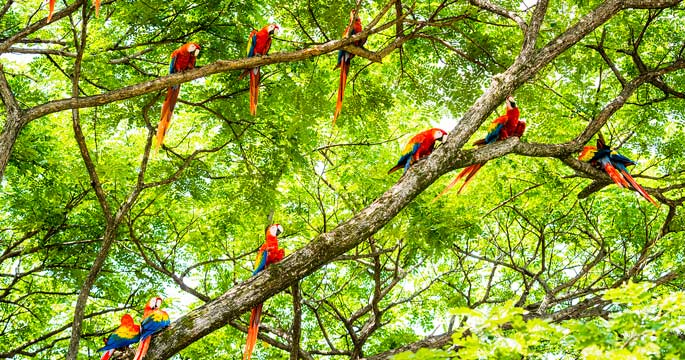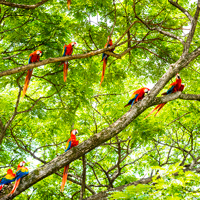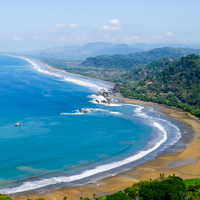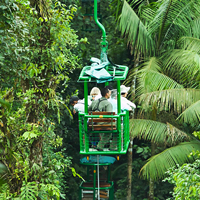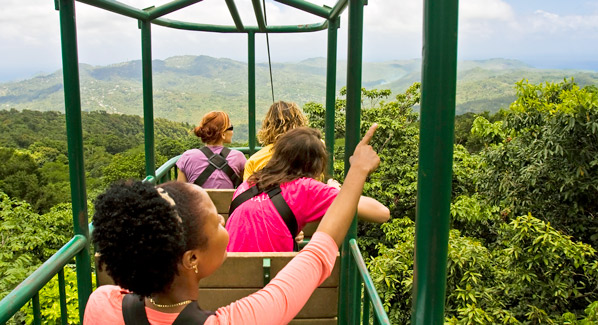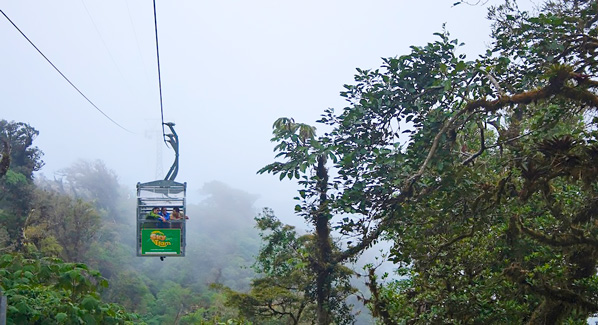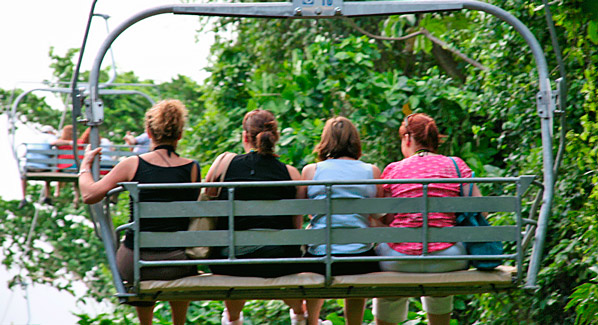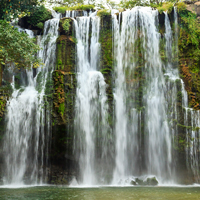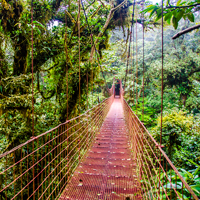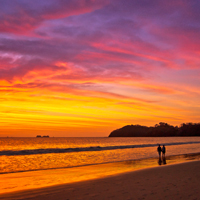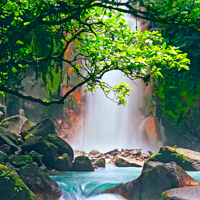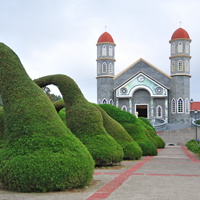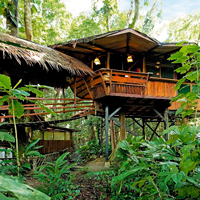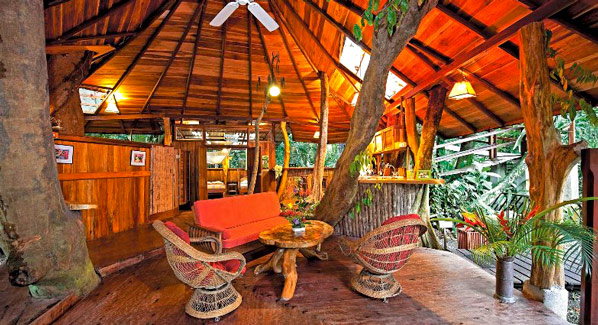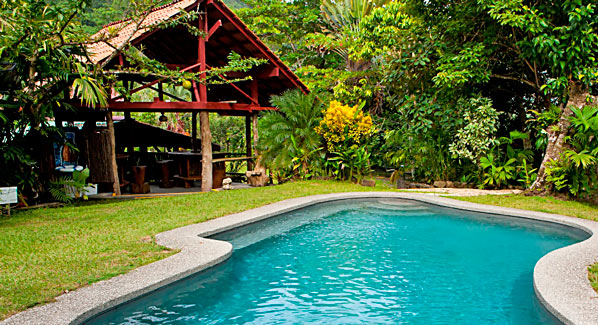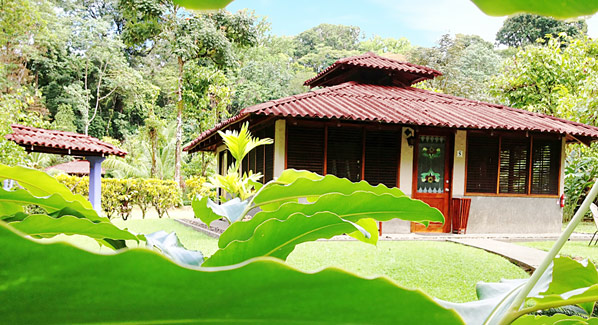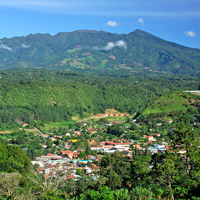Central America is a land shaped by subterranean fires and violent eruptions. A geological formation known as the volcanic arc stretches some 900 miles from southern Mexico into Panama, encompassing hundreds of active and dormant volcanoes and lava domes. These peaks dominate the landscape and influence weather patterns. They are also the setting for a new type of adventure travel: volcano hiking. Climbs can range from easy hour-long rambles up lesser peaks to strenuous all-day ascents of summits rising more than two miles in the air. Here is a sampling of what awaits.
Acatenango, Guatemala
Western Guatemala is dominated by towering volcanic peaks, some dormant, some still very active. The tallest ones rise to heights of more than 12,000 feet, providing challenging but manageable climbs for the fit and adventurous. The historic city of Antigua is the starting point for the most popular ascents, including the trek up the country’s third highest peak, Acatenango. It’s possible to tackle the four-hour uphill route to the summit as a day trip, passing from farm land to cloud forest, pine woods and finally open slopes to enjoy 360-degree views that include a bird’s-eye view of the active eruptions of the nearby Fuego volcano. If the long march doesn’t appeal, some outfitters break up the trip with an overnight campout on the upper slopes.
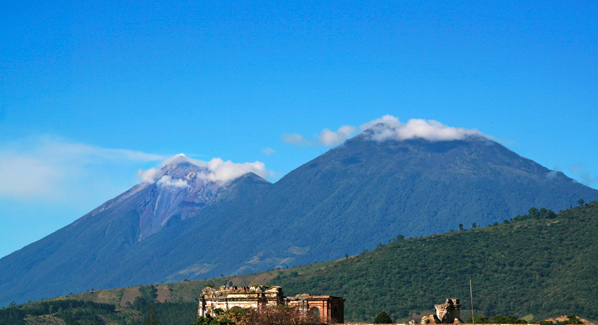
The adjacent peaks of Acatenango and Fuego tower over the Guatemalan city of Antigua. The former is a favorite hiking destination, while the latter remains too active for safe access. Photo: iStock
Cerro Negro, Nicaragua
Nicaragua has 20 active and dormant volcanoes, many of which can be hiked or climbed. The most unusual of these is the Cerro Negro, or black hill. This ominous cinder cone, which rises to an elevation of 1,600 feet above the countryside, is actually Central America’s youngest volcano, having first erupted in 1850. It’s been quiet since 1999, giving hikers a chance to make the 45-minute uphill climb on an exposed but manageable slope of ash and rock. After taking in the 360-degree views, the more adventurous can opt to slide back down on a toboggan-like board. Many tour operators end the day with a swim in the crystal-clear waters of nearby Asososca Lake.
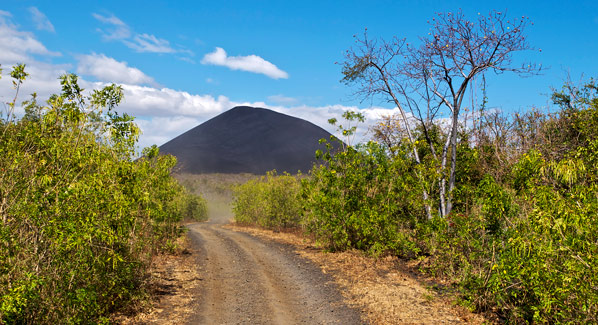
Nicaragua’s Cerro Negro is a young volcano comprised almost entirely of black volcanic ash. After making the climb to the top, some choose to descend on sled-like sand boards. Photo: iStock
El Tigre, Honduras
Honduras is no longer a hotbed of volcanic activity, but the country’s highlands are home to dozens of long-dormant peaks crossed by hundreds of miles of hiking trails. A more unusual hike is Volcán el Tigre, which is a classic cone-shaped volcanic mountain that not only provides a challenging half-day hike, but also makes for an interesting arrival. To reach the base of the slope, you must first take a boat trip across the Gulf of Fonseca to Isla del Tigre. This region of Honduras doesn’t see much tourism activity, so you may have the trail to yourself as you ascend some 2,500 feet for views of the Gulf and the mangrove-covered coastal lowlands that stretch into the distance.
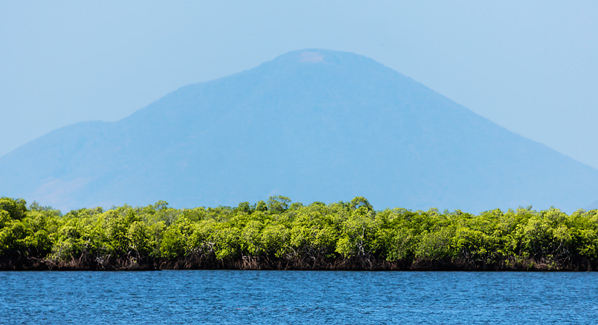
El Tigre volcano presents a classic conical that dominates the coastal mangrove forests of Honduras’ Gulf of Fonseca. It rises from an island that can be reached by ferry. Photo: iStock
Irazú, Costa Rica
Costa Rica has several active volcanoes. Some such as Arenal can only be viewed safely from a distance, while others offer bubbling crater lakes, geysers and steaming vents, which can be reached by user-friendly trails. One of the most popular of these is Irazú, which, despite being the country’s highest volcanic peak at just over 11,000 feet, is easy to reach, thanks to a paved road that leads right to the summit. From the parking area, trails spread outward to a lunar-like landscape that includes four craters, the largest of which holds an unusual green-water lake. Overlooks around the crater rim take in vistas that can stretch from the Pacific to the Caribbean on a clear day.
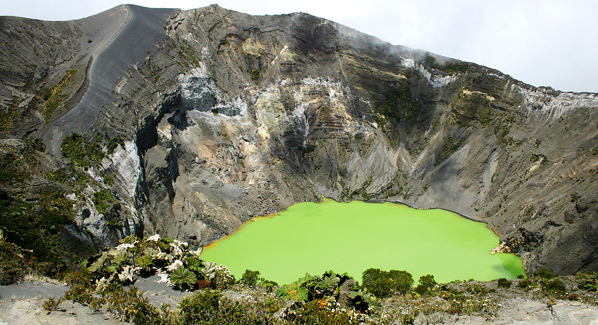
Irazú is Costa Rica’s highest active volcano, and the easiest to reach. Near the summit, the crater lake known as Diego de la Haya is filled with waters tinged green by volcanic activity. Photo: iStock
Volcán Barú, Panama
The ridge of volcanic peaks that stretches through much of Central America tapers as it reaches Panama, but not before the peak known as Volcán Barú rises to a height of two miles. Starting from the highland village of Boquete takes care of the first mile, but there’s still nearly 6,000 feet of climbing needed to reach the top. A nine-mile trail rambles through grasslands and wooded slopes before emerging onto a rock-covered upper slope. Along the way, there are stops to view historic craters and the lands below. Rather than attempt to make the summit and return the same day, most tour companies set up camp about a half mile below the top, giving trekkers a chance to sleep under the stars and make the short climb to the peak the following morning to view the sunrise.
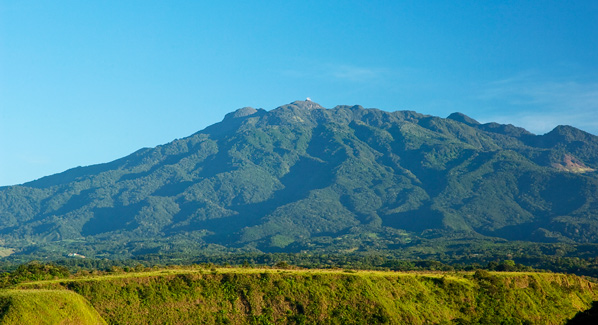
Volcán Barú rises above its namesake national park. A hike to the top takes one from farmlands into highland forests and on to an open peak with panoramic views. Photo: Alfredo Maiquez/iStock

